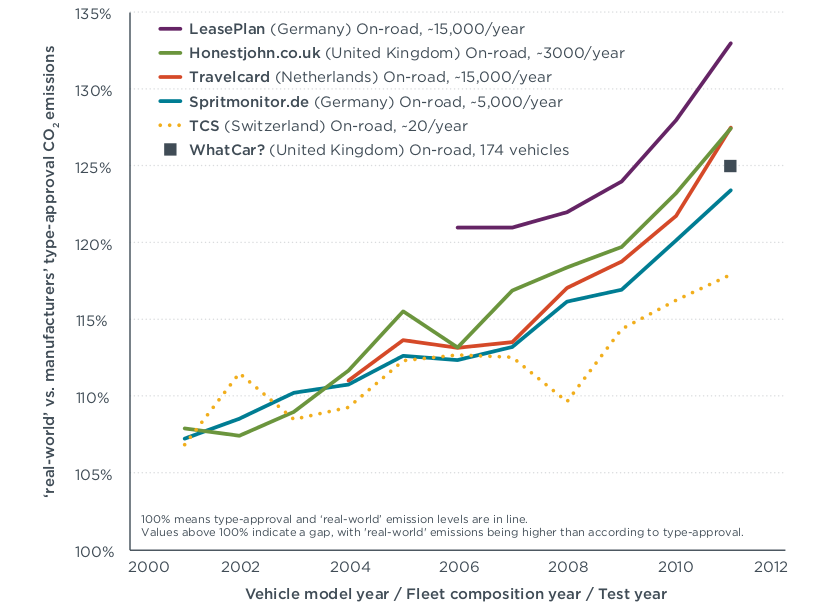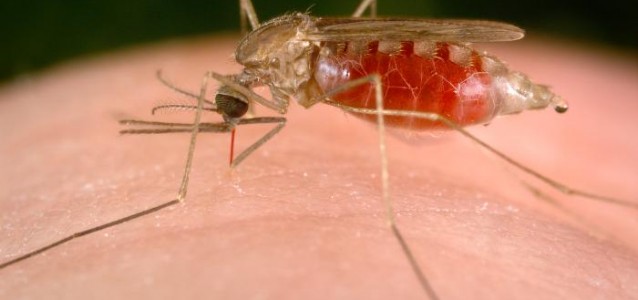(Feature image: Female Anopheles Freeborni (a species of mosquito responsible for malaria transmission) drawing blood from a human host; from Gathany, 2004)
Last week Chris wrote a really interesting blog in which he drew particular attention to the defensibility of the actions of climate change scientists in light of their intimate knowledge of the probable consequences of a modern lifestyle. Are jet-setting, meat-consuming climatologists like smoking doctors? (my own analogy, if you don’t approve). So in this blog I consider the two main types of actions we may undertake to address the risks of anthropogenic climate change — mitigation and adaptation — by looking at prominent examples of their (proposed) application. In particular, my intention is to emphasise some of the complexity and nuance of these matters and the care that consequently needs to be taken to ensure that attempts we make to adjust our lifestyles really do produce the intended results efficiently — both on an individual and societal level.
The two sections that follow are essentially separate and hence, if you are bored by either of the subsequent sections, feel free to read only the other.
In a blog I wrote last year (Automotive carbon taxes: help or hinderance?), I discussed some of the difficulties involved in strategies aimed at mitigating automotive greenhouse gas emissions. Since then a number of studies (e.g. by The International Council for Clean Transportation (2), Technology and Environment, the Environmental Sciences Europe journal, The Dutch Government, The Netherlands Organisation for Applied Scientific Research (2), Travelcard and these summaries by the AA and Green Car Congress) have been released indicating that some of the potential problems described are being observed in practice — with substantial economic consequences. This lead to a media storm in The Netherlands (see e.g. De Telegraaf, Volksrant and Elsevier) and, to a somewhat lesser extent some other European countries (see e.g Fleet World, The Green Car Website and Fleet News), where very significant fiscal subsidies and tax breaks are available for cars that emit less than certain threshold amounts of carbon dioxide per kilometre. As a result failure to achieve austerity goals have been blamed, in part, on “dishonesty” by car manufacturers. As numerous bloggers (e.g. Roy Kleijwegt) have pointed out, however, it would be naive to expect car manufacturers not to make use of “loopholes” in legislation when car sales are so heavily dependent on having low official CO₂ emission figures.
Probably the most worrying results to have emerged from recent investigations are that the difference between real-world and official emission figures is increasing rapidly (see figure 1 below), that this is particularly true for small and economical cars, that the efficiency of such vehicles is more dependent on driver behaviour than for older vehicles and that discrepancies between official and real-world emissions are greatest for cars from manufacturers that have most widely embraced new technologies and methods (such as “downsizing“) to reduce fuel consumption. As a result, projected or theoretical reductions in emissions from the transportation sector are likely to be larger than those actually realised. Additionally there are indications that techniques that are being used to reduce fuel consumption may lead to less reliable vehicles, producing hidden additional emissions down the line (for example the TSi engine range from the Volkswagen Group – see AutoBild, Autoweek, and Honest John). It also means that consumers wanting to make a “green” choice can’t simply take official statistics at face value.
Hence, even with an industry which has come under a lot of pressure to contribute to national and regional emission reduction — especially in Japan and the EU — and where the potential to achieve this through relatively simple policy directives may appear to be significant and complex issues arise. Finding mechanisms which would lead to a robust net reduction in greenhouse gas emissions is a difficult but vitally important task, requiring careful, in-depth analysis.

Figure 1: Ratio of achieved (“real-world”) and official European carbon dioxide emission rates as a function of time, expressed as a percentage. Values are derived from various sources, as indicated. From Mock et al. (2013).
What then of the intricacies of the interwoven, multidisciplinary domain of impacts and adaptation? First, a disclaimer: I have no formal background in social or ecological science; my intention here is simply to explore the complexity of considerations required. Accordingly, I would appreciate any comment/corrections from those more directly involved in these fields. Primarily, I am concerned about approaches to adaptation which appear to consider it in isolation; as a challenge distinct from the general need for “development” for the impoverished and neglected that is sustainable both environmentally and in terms of resources, while also protecting biodiversity (see this paper by Fankhauser and Guido Schmidt-Traub, in which it is observed that “[i]n much of the policy discourse, particularly in discussions of adaptation costs and funding, adaptation is still treated as a stand-alone issue with little or no links to other development challenges.”).
Admittedly, there are probably certain emerging risks which require “separate” attention — for example, developing policy for previously unobserved extreme heat events. Additionally, certain prominent organisations are advocating considering climate change as a component of broader development policies (see, for example, these pages from Care, OECD and the World Bank). However, in light of the fact that one of the most emphatic messages of the IPCC AR4 WG II report was that the impacts of climate change are likely to be felt most acutely in the poorest and least developed countries, it is concerning that this GSDRC document concludes that “the relationship between [adaptation and development] has never been properly articulated, resulting in missed opportunities for collaboration.” Additionally, “confusion about the relationship between adaptation and development … has hindered … the allocation of funding for adaptation efforts.”
Which leads to an important point: climate change adaptation is “big money” (see e.g. this page) and a lot of this money will be pledged for improving resilience in impoverished regions. Given that poverty and lack of resources appear to be a very significant barrier to climate change resilience, it is important to ask how adaptation finance would be best spent. The GSDRC distinguishes two extreme positions: ” ‘pure’ adaptation” and ” ‘pure’ development” approaches between which most real-world interventions lie. Additionally one should remain aware of the impact such policies have on climate change mitigation — it would not be particularly useful to accelerate climate change through carbon-intesive adaptation strategies. Given these strong “couplings” (excuse the natural science terminology) between adaptation and development, one may ask how useful it is to assess the “costs” of climate change impacts and adaptation separately (see Fankhauser and Guido Schmidt-Traub (2010) paper referred to earlier).
For example, looking simply at the number of deaths resulting from climate change does not really paint the complete picture. Estimates vary significantly, but the AR4 report quotes an approximate figure of 150 000 people per annum and estimates as high as 400 000 have been suggested. These numbers are large and are likely to grow rapidly and it is a rather disconcerting thought that every time one turns on one’s car engine one is probably contributing to these deaths. To put it in perspective, however, WHO estimates that the number of people killed annually from second-hand smoking exceeds 600 000, roughly 28% of whom are children. If our intention therefore is simply to save lives in the coming couple of decades, we may be better off fighting the tobacco epidemic, which, while it is difficult, would not require the kind of radical socio-economic and socio-political reform that is likely needed in order to significantly reduce the risks from anthropogenic climate change. Which is absolutely not to say that mitigation and adaptation are not important — it is only to indicate that considering it as a separate problem to be assessed exclusively using conventional means does not do justice to the nature and extent of the problem that we are faced with. In particular, it neglects the asymmetry in the response capabilities of those most likely to suffer as a result of climate change and those most responsible for its occurrence.
As a final example, I would like to consider the case of assessing the impacts of climate change on malaria in, which has resulted in significant controversy, in particular investigations into malaria resurgence in the East African Highlands, with opposing groups of scientists believing that impact of climate shifts were negligible, and dominant (see, for example Hay et al. (2002), Gething et al. (2010), Stern et al. (2011), Paul Reiter’s memorandum to the UK parliament and this Reiter et al. (2004) article on the one hand, and Zhou et al. (2004), Tanser et al. (2003), Ermert et al. (2012) (2), Tonnang et al. (2010), Altizer et al. (2013) and Parham and Michael (2010) on the other hand, as well as this exchange in the letters section of Nature). As usually seems to be the case in such a polarised but complex debate, the truth appears to lie somewhere in between, although only a few studies seem to take such a “moderate” stance (one example can be found here) and the tension was exacerbated when the IPCC WG II (especially the TAR) chapter on human health was perceived to have referenced only studies done by authors supporting the idea that climate change was the dominant driver of malarial distribution shifts. The problem seems to be result of considering climate change independently of other known determinants of malarial distribution, such as drug resistance, agricultural practices and very importantly, human population distribution and density. Such assessments of individual factors in isolation are artificial and dangerous, as they assume a linear additivity in impacts from different sources that is highly unlikely to hold true in the “real world” (Ha! I’ve managed to incorporate my main project message into this piece).
Image References:
Mock, P., German, J., Bandivadekar, A., Riemersma, I., Ligterink, N. and Lambrecht, U. (2013). From laboratory to road: A comparison of official and ‘real-world’ fuel consumption and CO2 values for cars in Europe and the United States. International Council on Clean Transportation. Retrieved from http://www.theicct.org/sites/default/files/publications/ICCT_LabToRoad_20130527.pdf
Gathany, J. (2004). Figure ID 6765, Centers for Disease Control and Prevention (CDC) Public Health Image Library (PHIL). Retrieved from http://phil.cdc.gov/Phil/details.asp

David
Great article! Such thorough referencing makes it very digestible.
I’d be interested to see how emissions/fuel consumption tests will be adapted to fairly compare electric and hybrid cars (even internal combustion engines with advanced ‘eco’ settings and so on). The huge environmental cost of making the battery might be considered somehow. This is an area which can only get more complicated and testing procedures clearly need to be studied more carefully and brought up to date (and then regularly updated so that they don’t fall behind again).
Never mind plug-in hybrids and how their impact in South Africa would depend largely on Eskom (a worrying thought indeed).